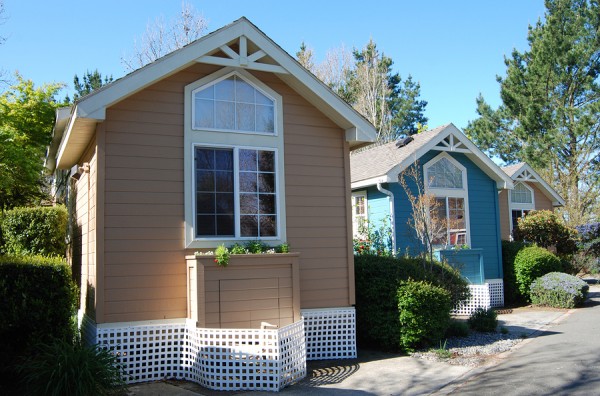WebStamp April 17, 2017
Tiny House Communities –Design Concept
I am really looking forward to writing this series of articles about creating tiny house communities in Calgary. Having enjoyed designing and building functional structures as a teenager building complete communities with Lego. My favorite was the pier community scaled to my matchbox vehicles, along with lighthouses and ocean liners. I had lots of Lego, and so did my cousin Peter, and we were constantly building.

In order to develop more sustainable, worry-less, tiny house communities we must first set guidelines to determine the use and functionality of the project. This will help us determine the needs of the community residents and land use of the design. First, we must ask why such a development would be merited. Most people looking to downsize to a tiny house are looking to simplify their lives and live, hopefully, mortgage free.
Reducing the size of the average lot (35-50’ x 120’) also makes it more affordable to the homeowner.Considering tiny houses range from 150 Sq. Ft. to 600 Sq. Ft. we could actually accommodate 3 or 4 houses on an average lot reducing the cost of land by as much as 75%.
In my architecture course at N.A.I.T. I designed 3, 1050 sq. ft. 2+ bedroom homes on a single 50’ x 150’ lot. I know, large for a tiny house, but each house had an attached single car garage and a large backyard and it all fits in a large average lot. Several tiny houses, instead of an oversized infill, would work, no problem and be much more esthetically pleasing.
For tiny house communities to be able to exist, many of today’s outdated land use rules and regulations need to be updated or removed, as seen in WebStamp’s last Issue’s article about tiny homes. Tiny houses are not new, many post war communities were created with half-size lots and homes 400 to 600 square feet in size. The city now permitting the creation of laneway homes now allows to retain the character of the neighbourhood and to create more affordable housing.
This tiny house concept on a single lot could be used to help create the necessary bylaws to accommodate affordable micro tiny house communities. Having bylaws that allow tiny homes to exist would benefit many looking to reduce the stress of everyday city life. Come back in two weeks for more on Tiny House Communities.
Share This Article
References:
https://www.reddit.com/r/Calgary/comments/5i2fow/tiny_house_city_bylaws/
https://www.youtube.com/watch?v=zuVjxjU68Jc&list=PL5YHZqa82xaiJVRPhscRvoCtUuvcNI7MI
https://www.youtube.com/watch?v=VMAAWABynns
http://www.edmontonjournal.com/Tiny+house+enthusiasts+gather+share+ideas/11325194/story.html
http://www.avenuecalgary.com/City-Life/Laneway-Housing-Calgary/




